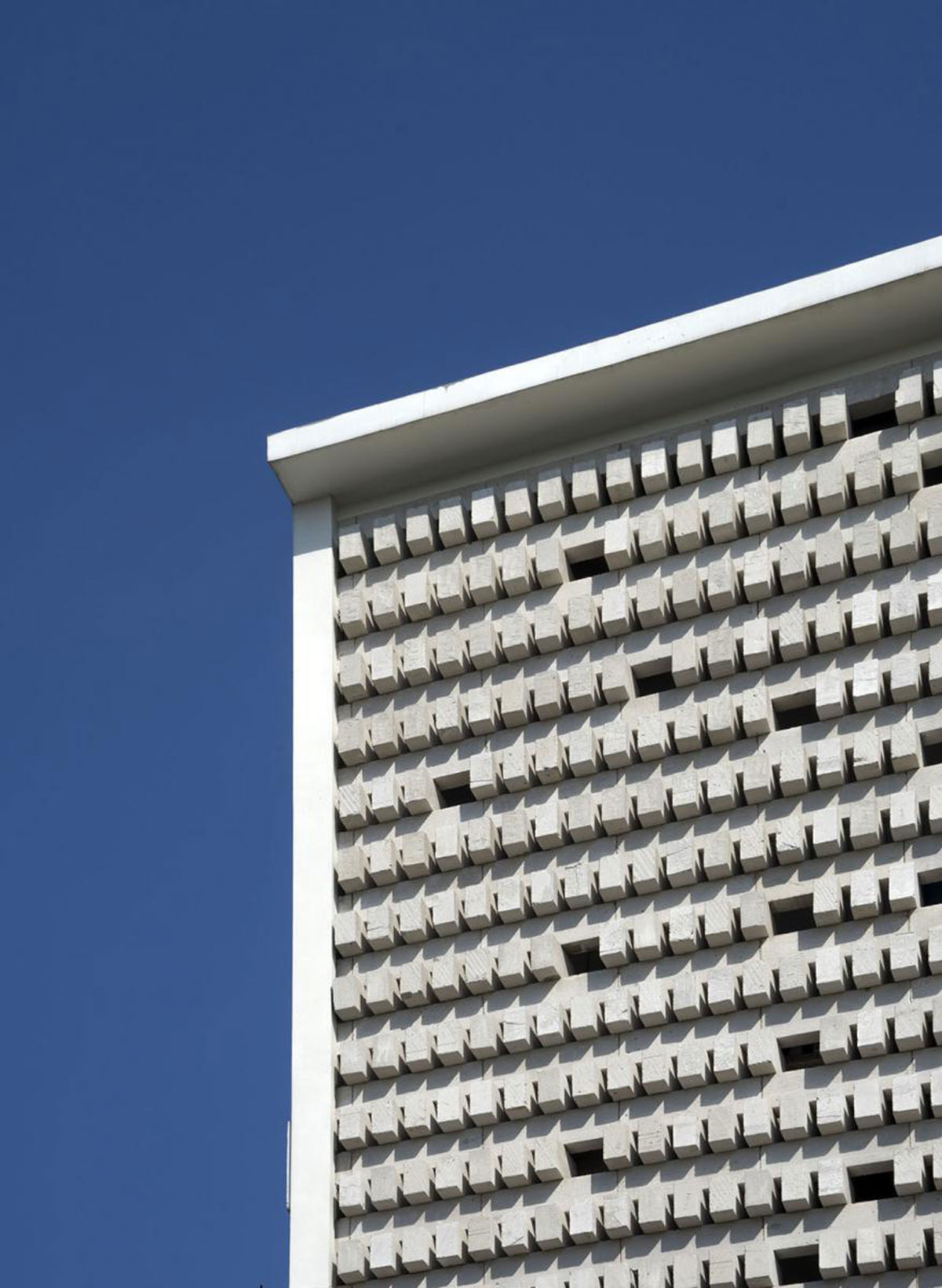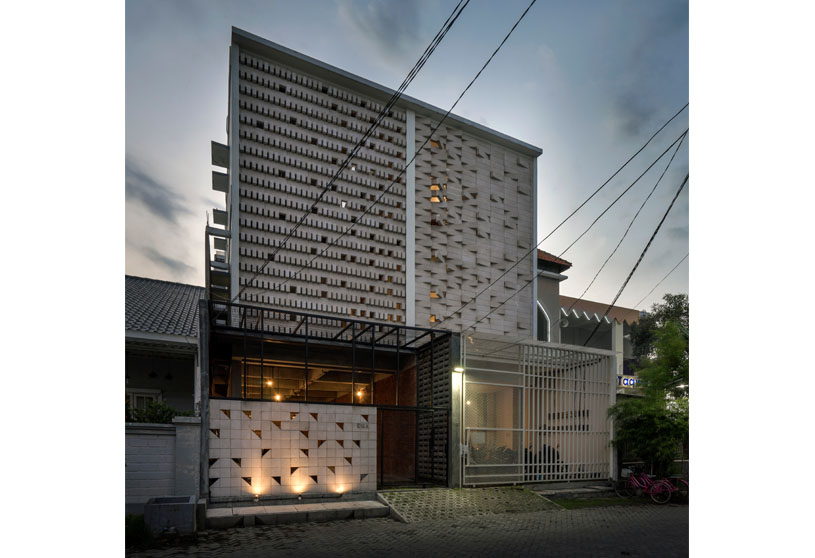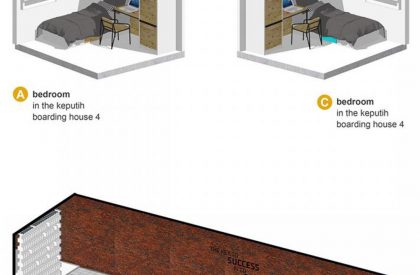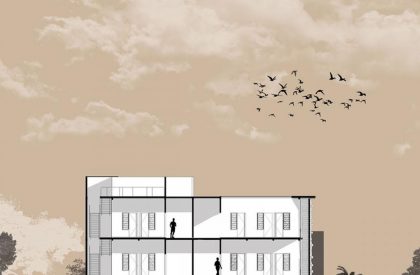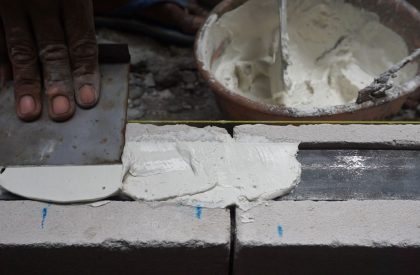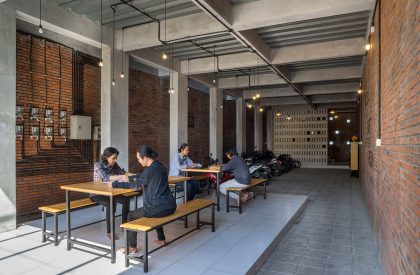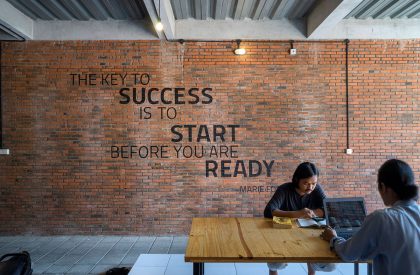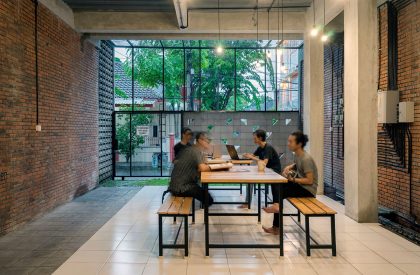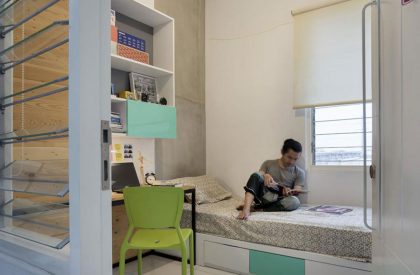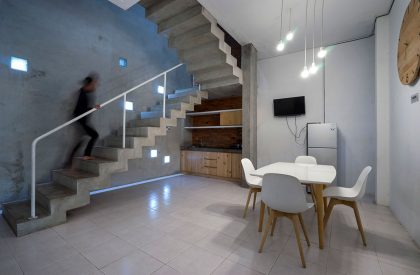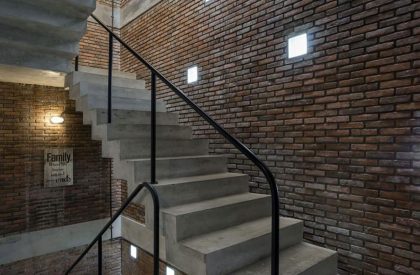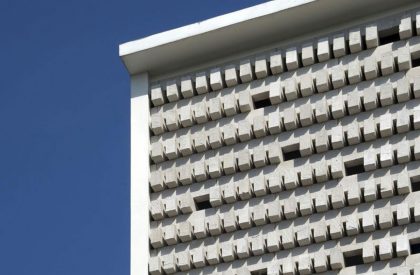Excerpt: Binary Boarding house is an architectural project designed by Andyrahman Architect in Indonesia. In this binary boarding house, the architect sets three main priorities: user, craftsmen, and client. The architect tries to let go of his ego to serve these three sides, unlike the modern humanism era where architects became the centre of a design.
Project Description
[Text as submitted by architect] A binary is something that is made up of two different parts or things, something is relating to, composed of or involving two things. Just like these boarding houses, there are two seperated buildings with two different owners, two diferent appearences, but still, they are related to each other, they are involved. So that we call it a Binary Boarding House.
In this binary boarding house, the architect sets three main priorities: user, craftsmen, and client. The architect tries to let go of his ego to serve these three sides, unlike the modern humanism era where architects became the centre of a design and all based on humane standards but ended inhumane because it didn’t start from its society’s contextual conditions.



The design process of these two boarding houses (Volume 4 and 5) shows that architect nowadays needs more than just cognitive (ideas) and motor (action) abilities, but they also need affective abilities (attitude and value) to treat others around his/her project area properly, more than just respect and sympathy.



User
Basic considerations not just a matter of business and gaining a lot of profit by making rooms as many as possible to be rented. We still give enough space for gatherings here, while maintaining the relationship between each user to be more personal and tolerant of each other.
Therefore, in each boarding houses, there is a communal space so the users who are students mostly can be a community that interact, socialize and empathize between each other as a human. It is hoped that this will also shape their attitudes and character in the future.
This communal space’s footstep can be traced to Nusantara architecture such as architecture in Java, Bali, Minang, Sumba, etc., where the people lives in communities, considering general importance above individual needs. From here we learned to make an affective room which functions like that.



Craftsmen and Craftsmanship
As in the Keputih Boarding House Volume 3 and 6, craftsmen as the project executor on the field are given full opportunity to express their creativity in craftsmanship broadly. Both façades which are connected uses light brick. The light brick is chosen because of the lighter weight compared to red brick, which is important because this boarding house has three floors. If the filling material is light, the structure cost will be cheaper, because the steel and concrete quality can be reduced. Construction budget can be decreased too. Light brick processed in some ways by the planner team, to challenge the craftsmen in bringing out their “feel” during the implementation process.
This is also an effort to maintain and upgrade the craftsmen’s skill who are familiar working with projects from andyrahman architect so they also can give some input to the design (not just as an executor). Apparently, they can calculate the construction logics by thinking of using steel as a reinforcement for the building’s façade construction, while still being invisible from the outside.
If we take a look at these two façade, there are both contrast and harmony. On the upper side, the harmonious aspect is the light white brick as the main material. The installation is the contrast. On the Keputih Boarding House Volume 4, the light brick was arranged in rhythm with a flat surface, and only the gaps are random. While on the Keputih Boarding House Volume 5, the light brick arrangement is “bolder”, arranged a bit off the rhythm with random gradation, a lot more dynamic.
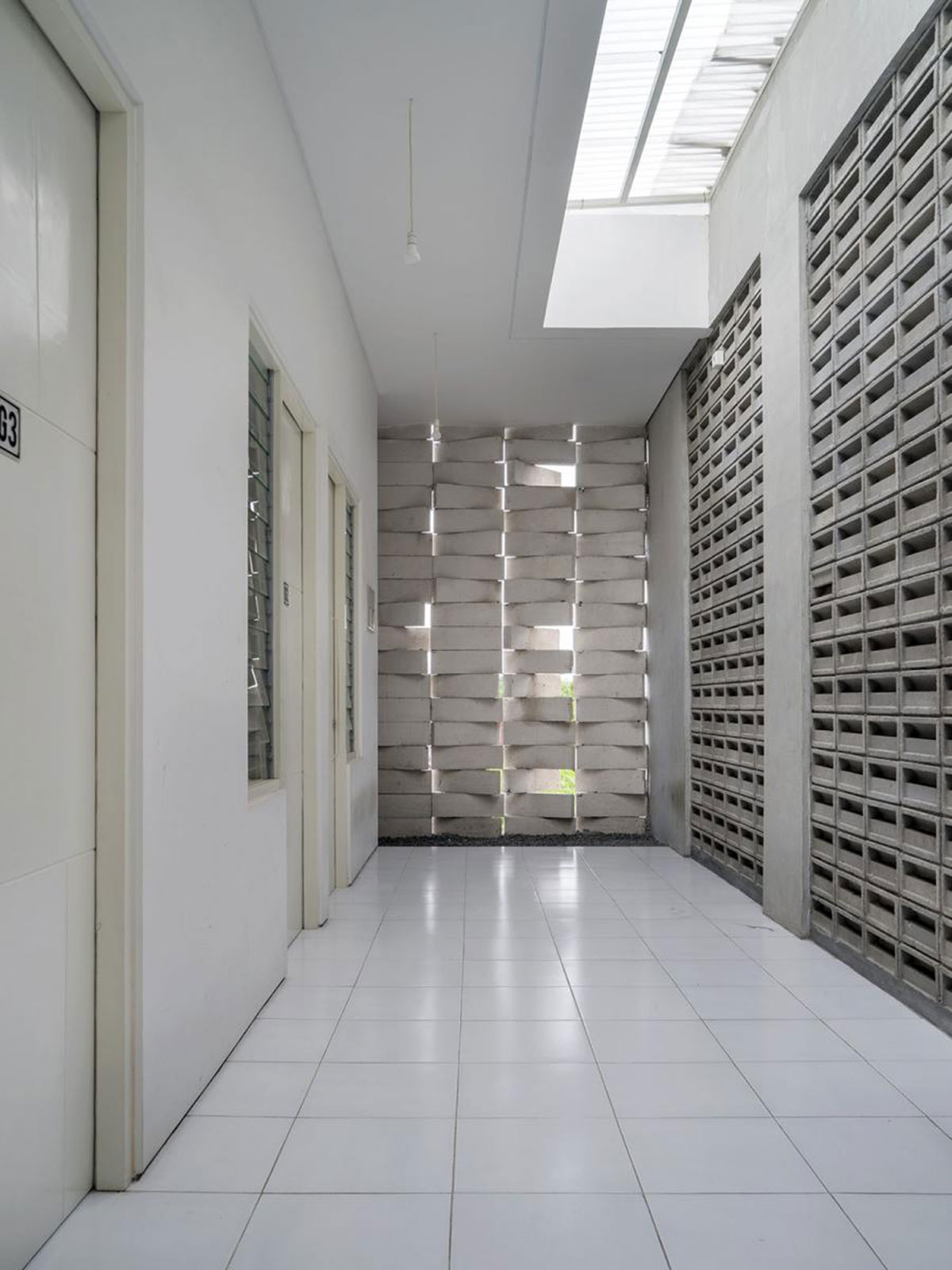

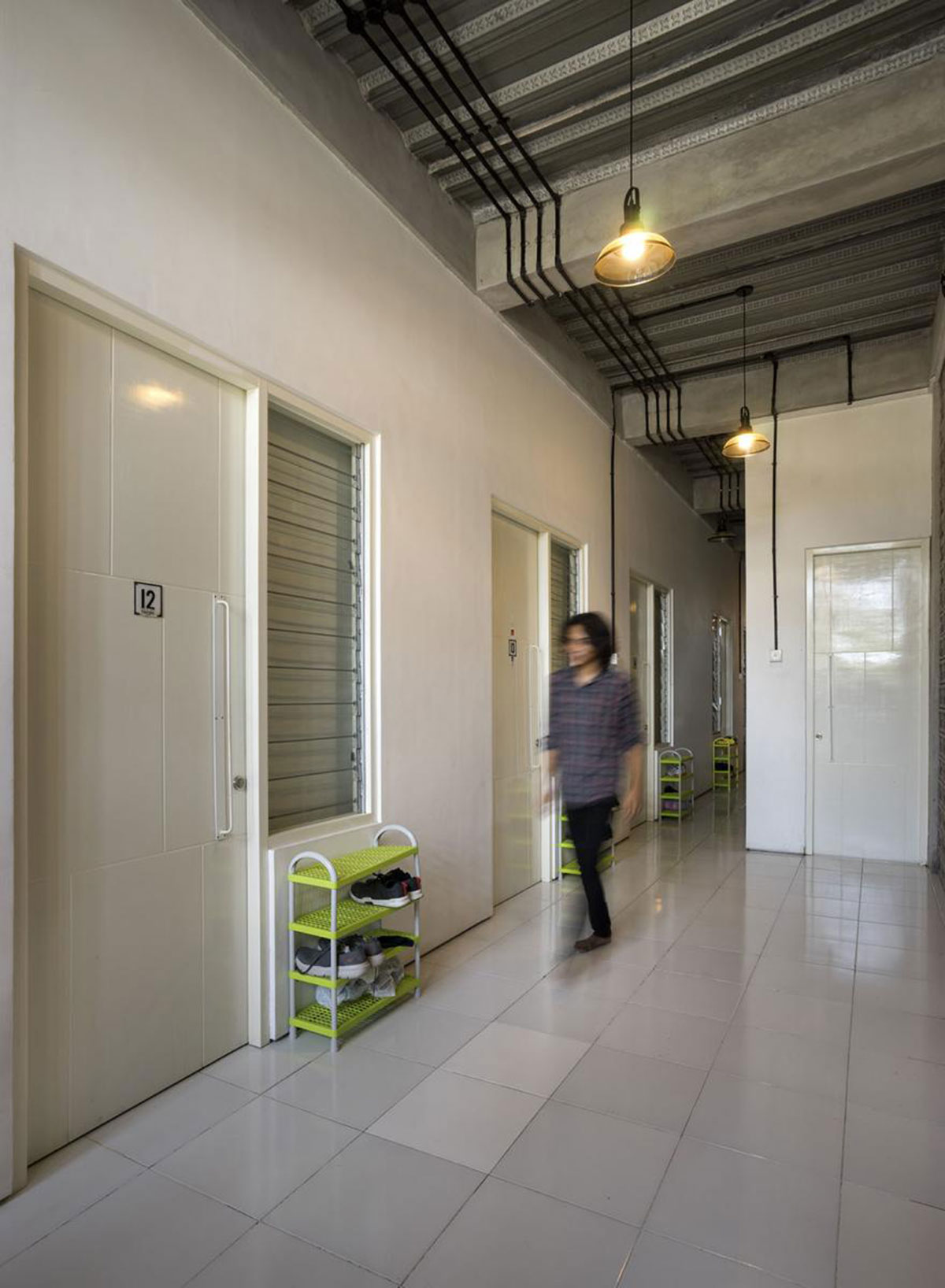
Two Clients
For the client, Keputih Boarding House Volume 4 and 5 are binary: one but two, two but one. Both are managed by the same person but have two different owners that are still related to each other (nephew). So the architect has to serve the clients’ two different characters too.
It is shown by both looks. Boarding House Volume 4 with a more unfinished look and has no ceiling. While Boarding House Volume 5 dominated by white colour, has ceilings that appears a lot more formal. But both boarding houses have a similarity, and they have a 60 cm gap between the sidewalls and the land border to give space for wind circulation and natural air to flow inside its rooms freely.
Even though the different owners are still related, both boarding houses are not fully separated but connected with a roster in the middle of them that allows the wind to flow between these two buildings. This shows that both boarding houses are “two, but one”.



Ssst… There is a story behind the light brick facade
These two boarding houses are “twins”, which designed as a reflection of each other. Keputih Boarding House Volume 4 and 5 has a unique background story because the owner didn’t have enough money to buy a quite big land lot, then asked his nephew to join in this boarding house businees. Finally, the boarding house comes to life, with the concept “two but one, one but two”.
The choice of light brick material for façade walls at Keputih Boarding House Volume 4 and 5 is to save the load on the structure, as well as save on the cost. This is because the character of the land at the location of the boarding house is movable land (former pond) with a hard soil depth of up to 12 meters, while the building has 3 floors. By using light bricks, the dimensions of the columns and beams can be smaller because the load on the walls is not as heavy as using red bricks.
